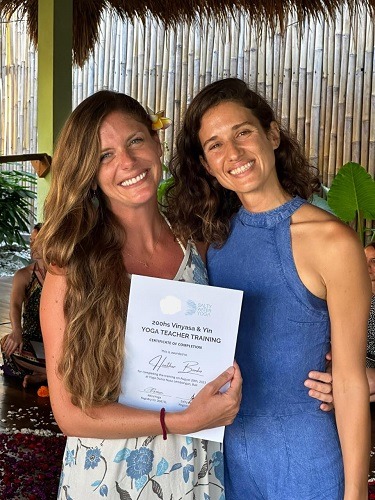Navigating Patanjali’s 9 Obstacles on the Path of Yoga: overcoming barriers to transformation.
On yoga’s journey toward self-exploration and spiritual growth, we encounter internal challenges that may seem like obstacles in our path.
These obstacles, known as the “Nine obstacles in the path of yoga”, are part of the Yoga Sutras of Patanjali.
Here we explore each of these challenges and how they can manifest in our everyday lives.
THE 9 OBSTACLES IN THE PATH OF YOGA
Vyadhi / Styana / Samsaya /Pramada / Alasya / Avirati / Bhranti Darsana / Alabdha Bhumikatva / Anavashitattva
“…A bit removed from the craziness of the Bali mainland, which has this incredible environment and amazing people”…
Heather -NZ
Vyadhi
Illness
Physical illness can hinder our yoga practice by limiting our mobility and energy.
For example, a sudden flu can prevent us from attending our regular yoga classes and affect our overall well-being.
Recognizing this obstacle helps us navigate it. Be aware that we need to adapt the practice or stay at rest without tormenting ourselves mentally or hurting our body.
Styana
Lack of enthusiasm, Apathy
Lack of motivation or energy can make our daily yoga practice difficult.
Apathy after a day of work can lead us to postpone our yoga session or skip it altogether.
Recognizing this obstacle helps us navigate it. Being aware that we are in an apathetic moment, perseverance can be a tool to avoid identifying with apathy.
That is, knowing that the feeling of apathy is temporary, continue with the practice that you were going to do at that moment.
Samshaya
Doubt
Lack of confidence in yourself or your yoga practice can cause uncertainty.
We may doubt our ability to master a new yoga pose, avoiding it for fear of failure.
Recognizing this obstacle helps us navigate it.
Pramadha
Negligence
Lack of mindfulness or care in our practice can lead us to make mistakes or even get injured.
For example, we may neglect proper alignment in a posture, which increases the risk of injury.
Recognizing this obstacle helps us navigate it.
Alasya
Laziness
An unwillingness to commit to a regular practice can slow our progress in yoga.
Laziness can lead us to stay in bed instead of practicing yoga, even when we know it will benefit us.
For this reason it is a good idea to sign up for classes, whether in person or online, so we create a commitment.
Avirati
Desire for sense objects
Attachment to results or excessive pursuit of pleasure can distract us from our yoga practice.
For example, we can become obsessed with achieving an advanced posture, losing sight of the main purpose of yoga: the mind-body-spirit connection.
Branti darshana
False knowledge, confusion, hallusination
Lack of mental clarity can hinder our ability to focus on our yoga practice.
For example, a mind agitated by worries or external distractions can interfere with our ability to meditate silently.
Recognizing this obstacle helps us navigate it. Carry out a practice that helps us in moments of a lot of mental noise.
Alabdha bhumikatva
Inability to concentrate
Lack of drive to start or maintain a regular yoga practice can limit our spiritual growth.
For example, indefinitely postponing signing up for a yoga class we’ve been considering taking.
By identifying this obstacle, it will be easier to dispel the excuses we make for procrastination.
Anavasthitatva
Instability
The difficulty in preserving the serenity or balance achieved through the practices constitutes an additional challenge.
Lack of long-term commitment can lead us to prematurely abandon our yoga practice.
We may get excited at first about a yoga routine, but after a few weeks, lose motivation, stopping practicing.
Being aware of this will allow us to prepare to pass that moment of instability.
Recognizing and addressing these nine obstacles in the path of yoga is essential to cultivating a deep and meaningful practice.
By identifying how they manifest in our daily lives, we can work to overcome them and move towards greater physical-mental-spiritual well-being.
Yoga can be a symbolic word, this can be applied to any aspect of life, work, relationships, etc.
And remember that the obstacle is not something placed in the middle, the obstacle is the path.
DEEPEN YOUR PRACTICE & YOUR YOGA KNOWLDEGE – 200HS YOGA TEACHER TRAINING – certified by Yoga Alliance



